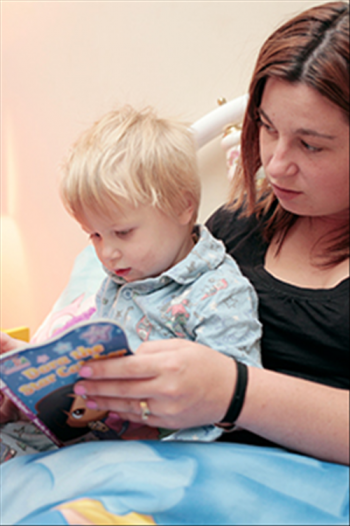Getting ready for bed
Duration/age

What’s the time? Is it time for bed?
Getting ready for bed is a wonderful opportunity to explore time and to look at the way we combine events together into a sequence. As bedtime approaches talk about what time your child will go to bed and how they know when that is. Is their bedtime 6pm - at the end of a favourite program? Or is it at the end of the evening meal?
What routines will your child need to do before going to bed? Will they have a bath first or clean their teeth? Talk about what they will wear for bed. Can your child get their PJs out themselves or will they need help to find them and dress. Which order will they put their PJs on? Do they start with the top and work down or start at the bottom and work up? What happens once they are dressed and ready for bed? Is there a set routine that involves a story or a favourite song or is it lights out straight away?
Skills this activity improves
Why does this matter?
Establishing a bedtime routine helps children to identify patterns in their environment and to learn how to sequence events in a logical order.
What does this lead to?
Establishing a bedtime routine supports children to explore the concept of time and that we can tell time not only by a clock but also by activities or events that happen at a regular time. As children start to predict and identify the regular events they are beginning to identify the patterns of the day and to plan what will happen next. When children can identify every day patterns they are able to have control over their life and become less reliant on the adult for direction.
Language to use
- Soon, now, later, close, nearly, time
- First, next, last
- After, before
- Finished, start, completed
Questions to use
- What will happen next?
- What do you need to do before you put on your PJs?
Useful tips
- If your child knows that you will be reading a story together, this may make the bedtime routine a little smoother.
- A bright, visual schedule of bedtime routines can help your child predict what is coming up next and can give them some choice and control.
- Remember to talk to your child in your home language.
More ideas
- Read stories about getting ready for bed.
- Take photos of your child doing each activity and make a bedtime book.
- Go on a time hunt around the house and search out the different tools we use to tell the time.
- Play relaxing music once your child is in bed.
- Read a story together in bed.
Variation by age
Birth to two year olds
- Read stories about getting ready for bed.
- Take photos of your child doing each activity and make a bedtime book.
- Sing bedtime songs.
Three to five year olds
- Read stories about getting ready for bed.
- Take photos of your child doing each activity and make a bedtime book.
- Go on a time hunt around the house and search out the different tools we use to tell the time.
- Time how quickly your child can get ready. What different tools can you use to measure? You could use a phone, a clock, an eggtimer, or a stopwatch.
Questions to ask
- How fast can you get your PJs on?
- Were you faster today than yesterday?
Questions to ask
- How fast can you get your PJs on?
- Were you faster today than yesterday?


